Greatest synth sounds: New Order - Blue Monday
All hail the biggest-selling 12-inch of all time
As most of you will surely know, New Order were created by the surviving members of Joy Division after that band’s frontman, Ian Curtis, took his own life in 1980.
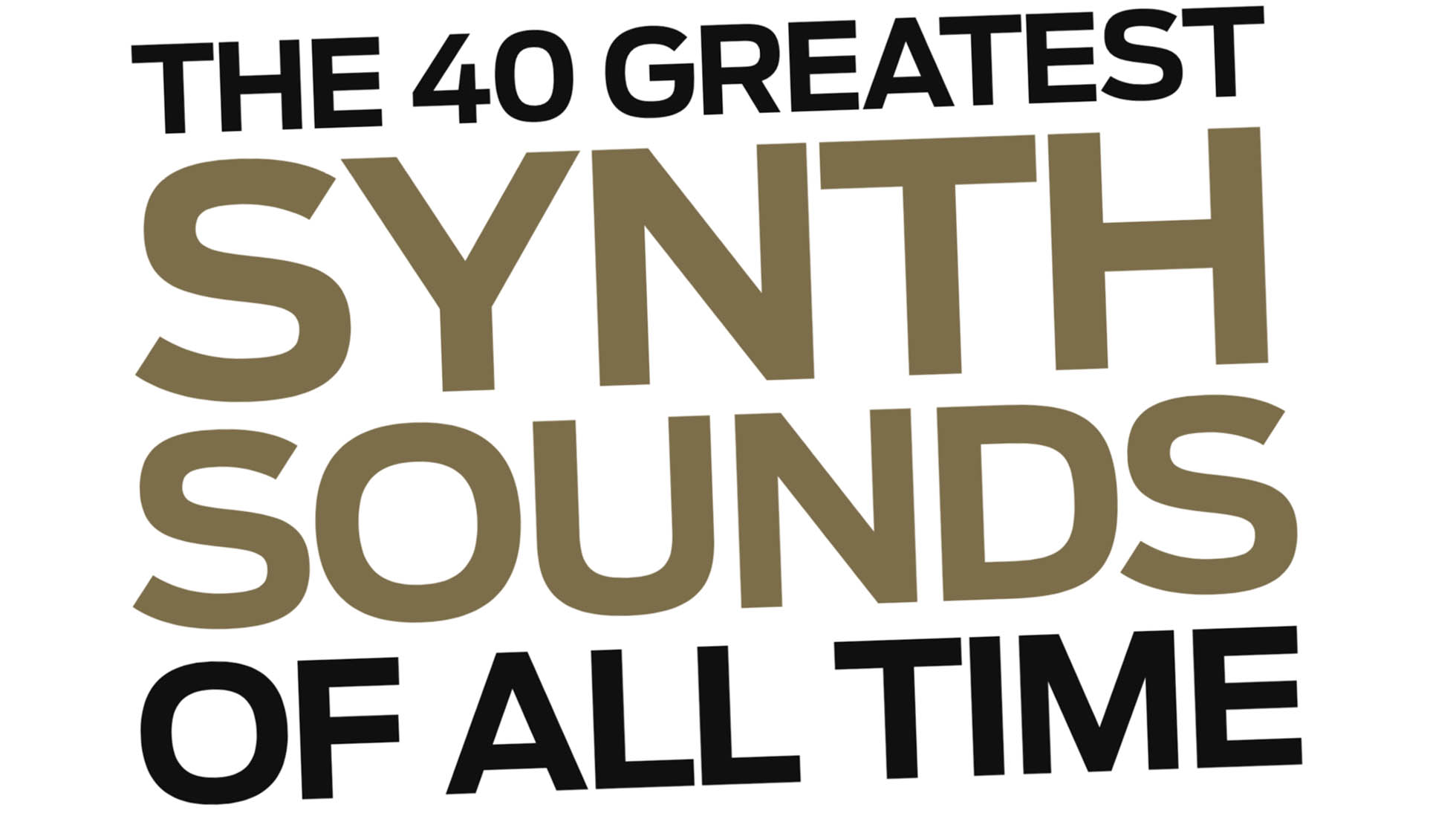
Bassist Peter Hook, guitarist Bernard Sumner, and drummer Stephen Morris had - along with Curtis - vowed not to use the name Joy Division should any member of that band depart, so the remaining trio assumed a new moniker and added a new member, Morris’ girlfriend Gillian Gilbert, on keys and second guitar.
Sumner was assigned vocal duties on the basis that he could comfortably alternate between singing and playing his guitar.
The band’s first single, Ceremony, was composed during the final days of Joy Division and carries on that band’s post-punk style, as did the band’s first album of newly-penned songs.
However, a trip to New York introduced the band to new dance music, including Italian disco. Electronics and dance elements began to play increasingly prominent roles with each successive release.
Blue Monday itself quite literally originated in the club scene. The band’s label opened the now-legendary Haçienda in 1982. The opening night saw New Order play a lengthy number that included elements that would later be recycled in their biggest hit.
Recorded in 1982, Blue Monday was propelled by a stomping kick drum from an Oberheim DMX drum machine, an out-of-sync sequencer line, and choirs (allegedly) sampled from a Kraftwerk album. A distinctive Moog Source bass snakes through the disparate elements. Sumner’s purposely pallid croon drapes it all in a sepulchral shroud.
Get the MusicRadar Newsletter
Want all the hottest music and gear news, reviews, deals, features and more, direct to your inbox? Sign up here.
Not that the listeners were paying attention to the lyrics - they were too busy dancing. It sold like mad, going on to become the biggest-selling 12-inch single of all time.
In something of an ironic twist, the expense of producing Peter Saville’s artful packaging meant that it actually lost money each time a copy was sold. Needless to say, Blue Monday was eventually re-issued with a slightly more conservative sleeve...
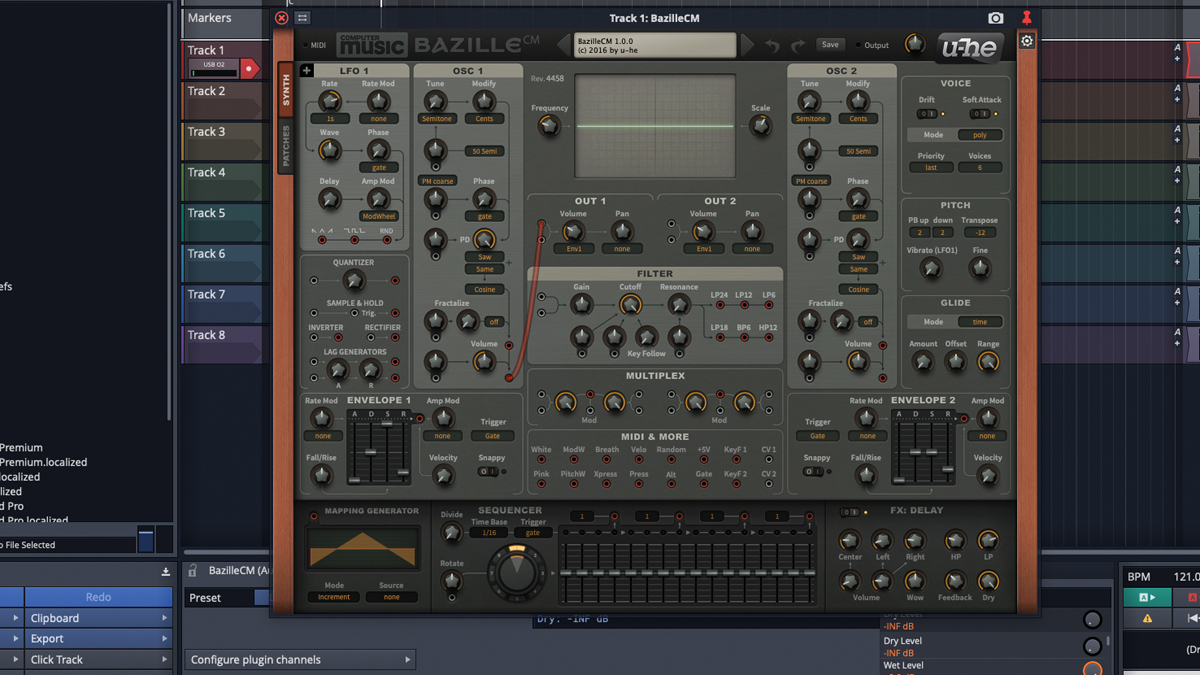
Step 1: It’s fitting that a single that would shape the future of music would be made with an instrument that could charitably be referred to as “space age” in appearance! Moog’s The Source was a garish delight in silver, orange and blue. Luckily, it sounded better than it looked. We’ll be using u-he’s BazilleCM to recreate this legendary bass sound.
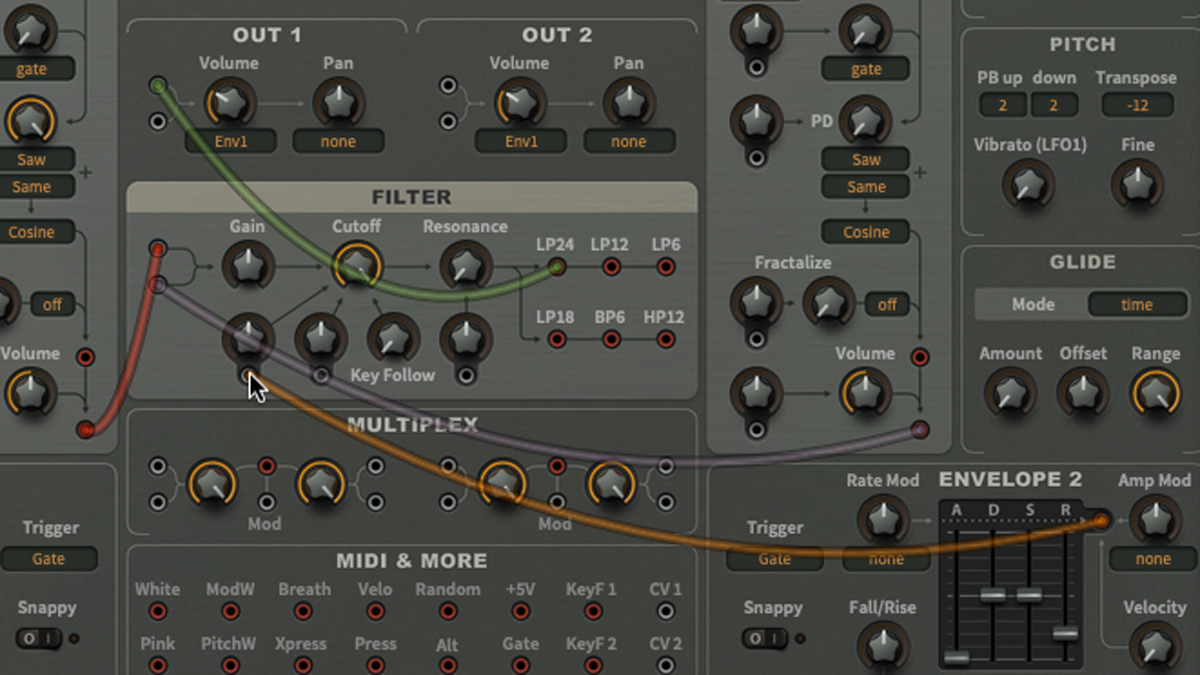
Step 2: First, we’ll disconnect Osc 1’s Output cable from Out 1, and insert it instead into the top-left Filter Input. We’ll patch Osc 2’s Output to the other Filter Input. The Filter’s LP24 Output will now go to the Out 1 jack previously occupied by Osc 1. Next, we’ll route a cable from Env 2’s Output to the Filter’s lower-left Input.
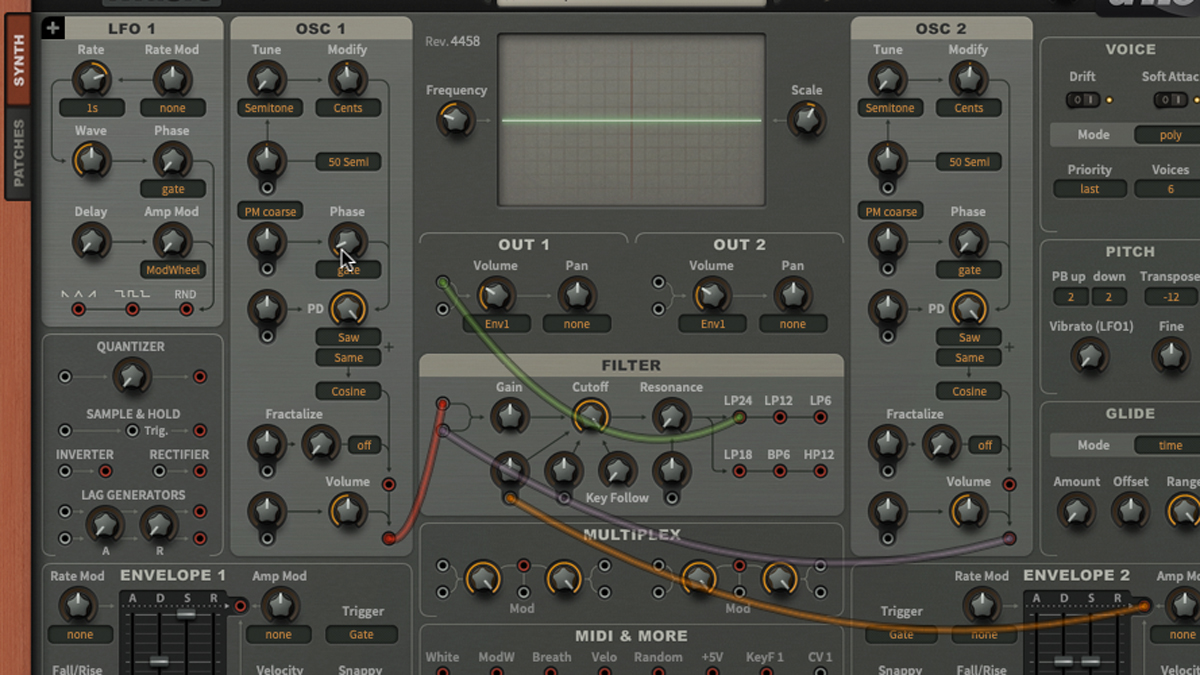
Step 3: Go to the FX: Delay section and deactivate the delay effect. Let’s start shaping the sound. Set Osc 1’s Modify knob to -2.00 and Osc 1’s Modify knob to 2.00. Find Osc 2’s Waveform menu (it says Saw) and turn the knob above it fully clockwise. Now, nudge Osc 1’s Phase knob up to around 9.00.
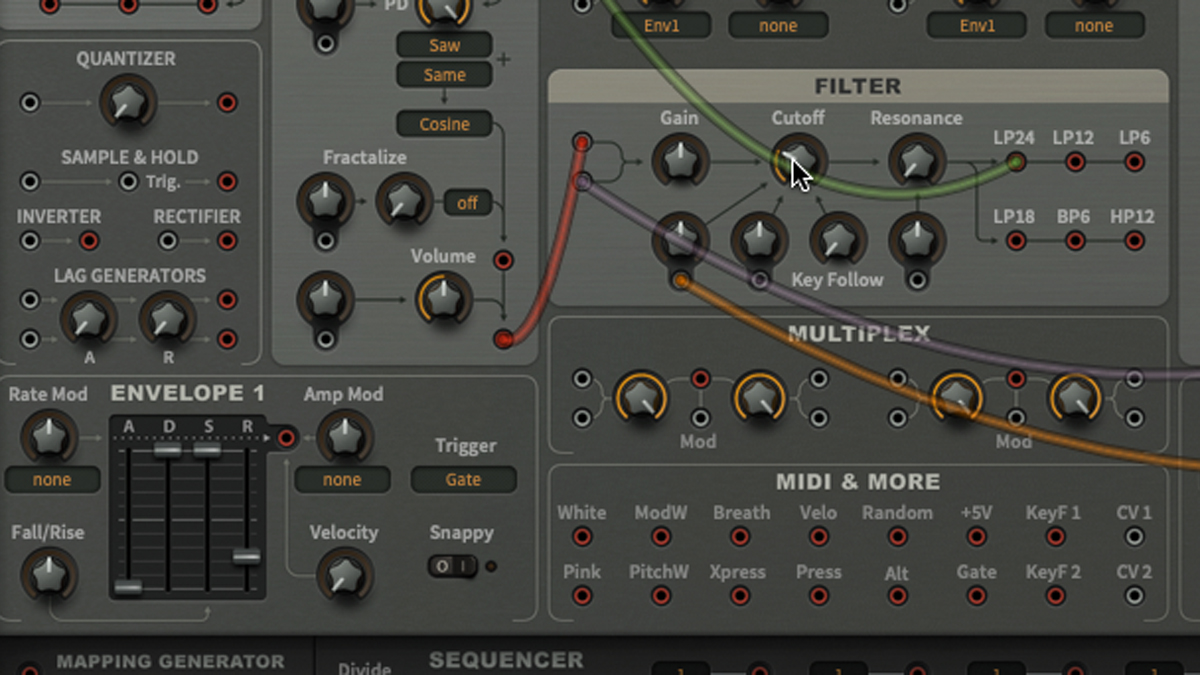
Step 4: Our sound is pretty burly at this point, but lacks any sort of shape. Go to Env 1 (it controls the amplitude). Set the Decay and Sustain sliders fully up. Set Release to about 23.00. Now let’s go to the Filter. We’ll set the Cutoff knob to around 42.00. Our sound is now all but inaudible. Don’t panic! That’s where Env 2 comes in.
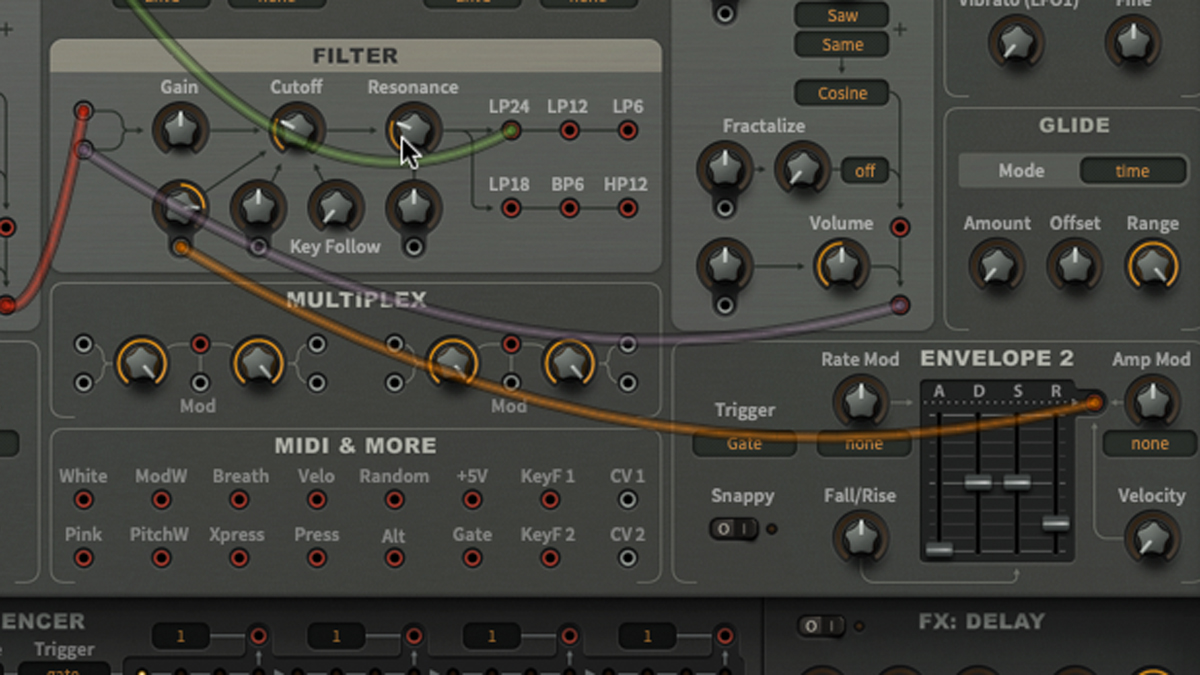
Step 5: To get Env 2 in on the action, we’ll need to shove the Filter’s lower-left knob up to a value of around 96. This is the knob controlling the amount of modulation coming from Env 2. While we’re in the Filter, we’ll nudge the Res knob up to about 26.00 for some of the ‘squelch’ we hear in the original patch.
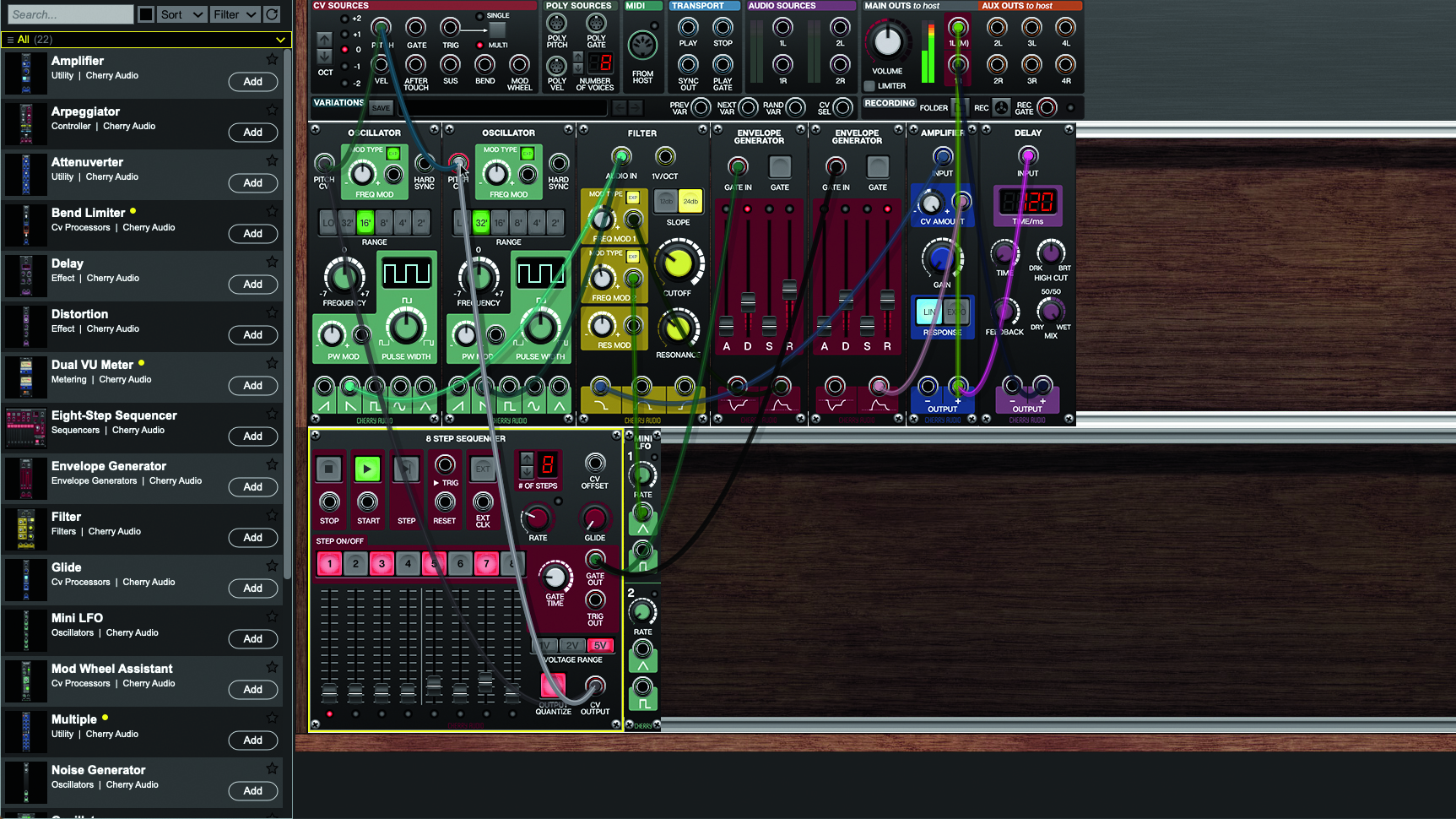
Step 6: The sound still isn’t quite there – we need to see to Env 2. The Attack is OK at nil. The Decay should be pushed up to about 22.00. The Sustain slider should be set to around 33.00, and the Release should be at around 29.00. This gives us a close approximation of New Order’s Moog patch, but feel free to tweak it further!


Computer Music magazine is the world’s best selling publication dedicated solely to making great music with your Mac or PC computer. Each issue it brings its lucky readers the best in cutting-edge tutorials, need-to-know, expert software reviews and even all the tools you actually need to make great music today, courtesy of our legendary CM Plugin Suite.
“Excels at unique modulated timbres, atonal drones and microtonal sequences that reinvent themselves each time you dare to touch the synth”: Soma Laboratories Lyra-4 review
“A superb-sounding and well thought-out pro-end keyboard”: Roland V-Stage 88 & 76-note keyboards review










